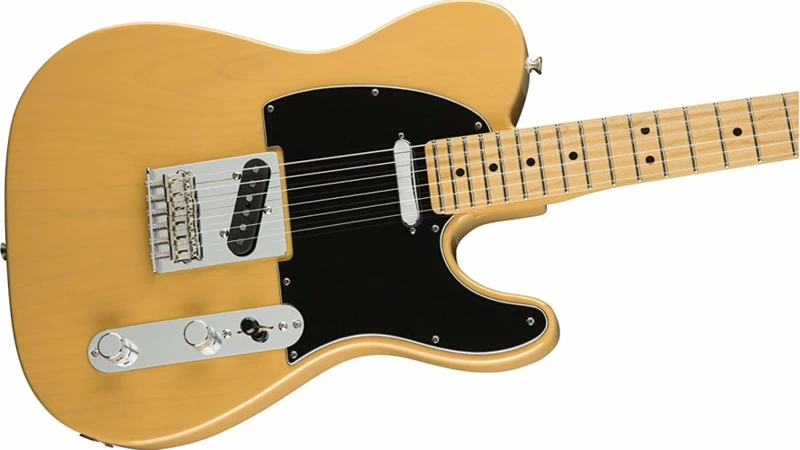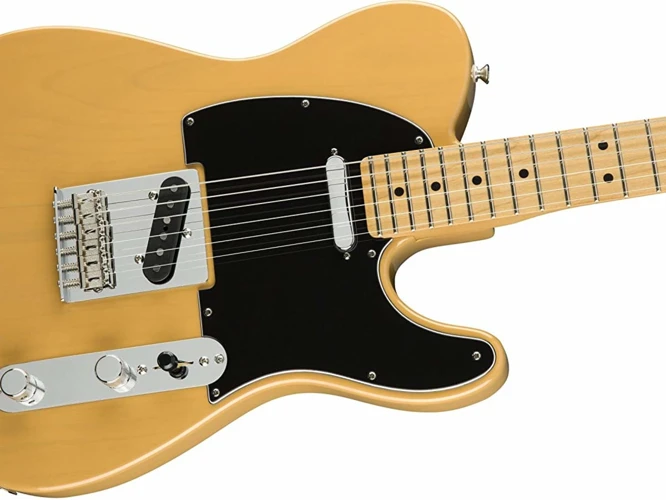When it comes to country music, the guitar is an essential element that sets the tone and style of the music. Over the years, electric guitars have become a staple in country music, offering a wide range of tones and styles for musicians to explore. In this blog post, we will delve into the debate of vintage vs modern electric country guitars. We will explore the characteristics, sound, and appeal of both vintage and modern electric guitars in the context of country music, helping you understand the differences and make an informed choice for your own playing style.
Vintage Electric Country Guitars
Vintage electric country guitars hold a special place in the hearts of many musicians and collectors. These guitars, typically manufactured in the mid-20th century, exude a unique charm and character that is hard to replicate with modern instruments. One of the most iconic vintage electric country guitars is the Fender Telecaster, also known as the “Tele.” Introduced in the 1950s, the Telecaster quickly became a favorite among country music players for its twangy tone and reliability.
Another classic vintage electric country guitar is the Gibson ES-335. With its semi-hollow body design, the ES-335 offers a warm, rich tone that is well-suited for country music. Players like Chuck Berry and B.B. King popularized the use of the ES-335 in various genres, including country.
Vintage electric country guitars are prized for their craftsmanship and attention to detail. Many vintage guitars were handmade by skilled luthiers, resulting in instruments that are not only beautiful to look at but also exceptional in sound quality. The aging of the wood and components in vintage guitars can also contribute to a unique tonal character that is highly sought after by musicians.
Tone and Sound
One of the key characteristics of vintage electric country guitars is their distinctive tone and sound. The twangy, bright tones produced by guitars like the Fender Telecaster are synonymous with classic country music. The single-coil pickups found in many vintage guitars contribute to this twangy sound, offering clarity and definition to each note.
In contrast, semi-hollow body guitars like the Gibson ES-335 produce a warmer, rounder tone that is well-suited for country ballads and melodic playing. The combination of the hollow body design and humbucking pickups in the ES-335 results in a smooth, full-bodied sound that is versatile across different musical styles.
Playability
Vintage electric country guitars are known for their playability and comfort. Many vintage guitars feature slim neck profiles and low action, making them easy to play for extended periods. The fretwork on vintage guitars is often impeccable, allowing for smooth transitions between notes and chords. Whether you prefer fingerstyle picking or flatpicking, vintage electric country guitars offer a responsive and dynamic playing experience.
Modern Electric Country Guitars
In recent years, modern electric country guitars have gained popularity among musicians looking for innovation and contemporary features. Manufacturers like PRS, Suhr, and G&L have introduced a wide range of electric guitars tailored specifically for country music players. These modern guitars combine traditional craftsmanship with cutting-edge technology to offer players a versatile and dynamic playing experience.
One of the standout features of modern electric country guitars is their versatility. Many modern guitars come equipped with a variety of pickup configurations, allowing players to achieve a wide range of tones with a single instrument. Switching between single-coil and humbucking pickups, as well as blending different pickup combinations, gives modern electric guitars a flexibility that is highly valued by musicians in the country genre.
Tone and Sound
Modern electric country guitars offer a diverse range of tones and sounds to suit different playing styles. The use of high-quality tonewoods, advanced pickup technology, and innovative electronics allows modern guitars to produce a wide spectrum of sounds, from classic twang to modern high-gain tones. Players can experiment with different pickup configurations, tone controls, and effects to create their own signature sound.
Playability
Modern electric country guitars are designed with player comfort and ergonomics in mind. Many modern guitars feature contoured bodies, slim neck profiles, and smooth fretwork for effortless playability. The use of advanced materials like carbon fiber and titanium in modern guitars results in instruments that are lightweight and durable, ideal for gigging musicians who require reliability and performance.
Comparison: Vintage vs Modern
When comparing vintage and modern electric country guitars, it ultimately comes down to personal preference and playing style. Vintage guitars offer a classic, timeless appeal with their unique tonal characteristics and craftsmanship. Players who appreciate the history and tradition of country music may prefer the vintage sound and feel of instruments like the Fender Telecaster and Gibson ES-335.
On the other hand, modern electric country guitars cater to players looking for innovation and versatility in their instruments. The advanced features and technology found in modern guitars provide a wide range of tonal options and playability enhancements that may appeal to contemporary musicians seeking a modern edge in their sound.
Tone and Sound Comparison
Vintage electric country guitars are known for their iconic twangy tones and warm, rich sounds, whereas modern guitars offer a broader sonic palette with enhanced versatility and tonal options. Players can achieve classic country tones with vintage guitars or explore modern high-gain sounds with advanced electronics and pickup configurations in modern instruments.
Playability Comparison
In terms of playability, vintage guitars are prized for their comfortable neck profiles and impeccable fretwork, while modern guitars offer ergonomic designs and lightweight construction for enhanced performance on stage. Players who prioritize traditional feel and craftsmanship may lean towards vintage guitars, while those seeking modern playability features may prefer modern instruments.
Looking to explore the world of electric country guitars? Check out our articles on vintage vs modern semi-hollow electric guitars for country music, semi vs solid electric country guitars, vintage vs modern pickups in country music, future electric guitars in country music, and custom electric guitars in country music for a deep dive into this fascinating topic!
Conclusion
Vintage and modern electric country guitars each have their own unique characteristics and appeal to different types of musicians. Whether you prefer the classic twang of a vintage Fender Telecaster or the versatility of a modern PRS guitar, both vintage and modern instruments have something special to offer in the world of country music. Ultimately, the choice between vintage and modern electric country guitars comes down to personal preference, playing style, and the sound you are looking to achieve. Whichever you choose, remember that the guitar is a tool for creative expression, and the most important thing is to enjoy making music and exploring the endless possibilities that these instruments have to offer.


